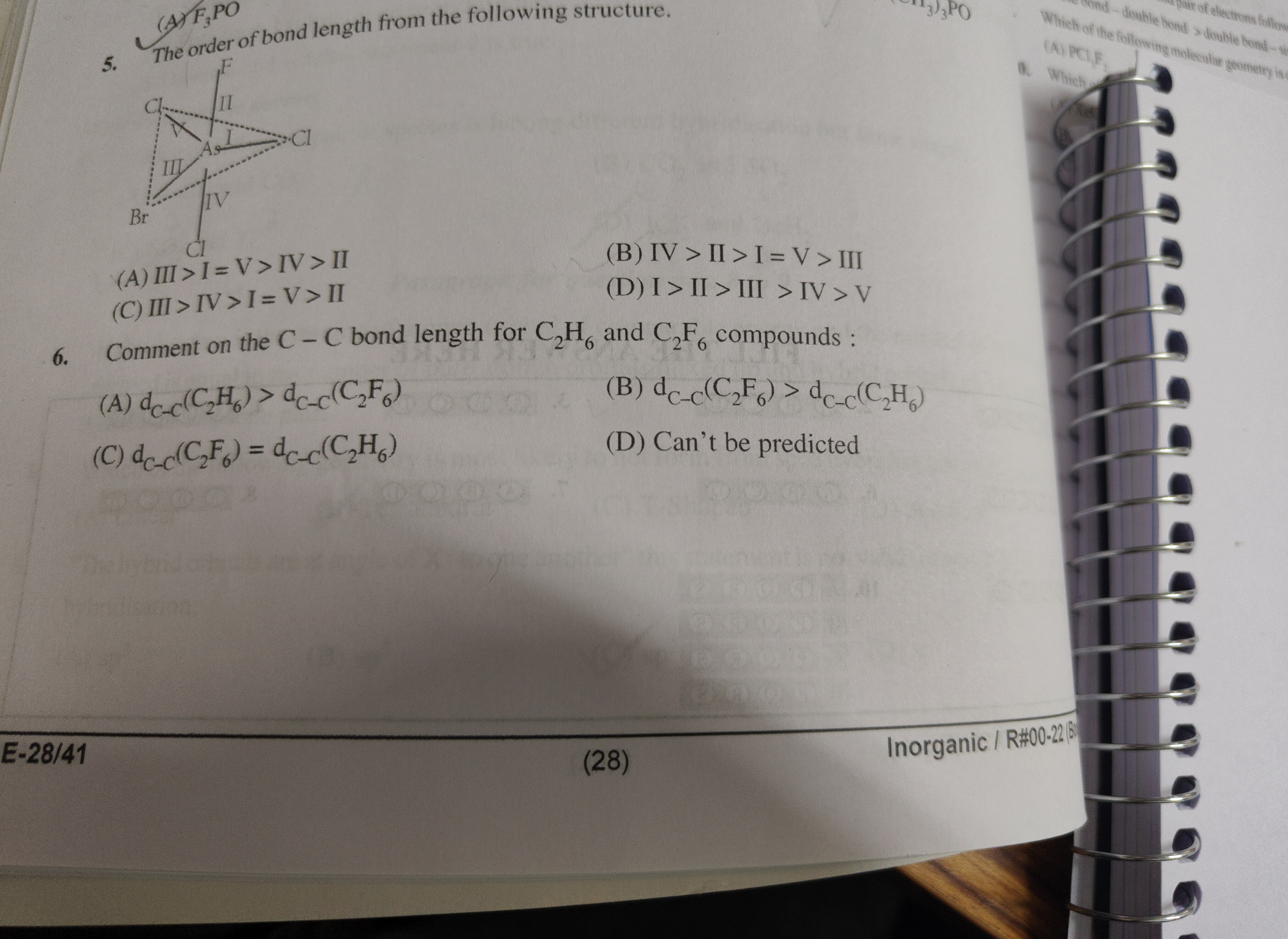Question
Question: The order of bond length from the following structure. ...
The order of bond length from the following structure.

A
III > I = V > IV > II
B
IV > II > I = V > III
C
III > IV > I = V > II
D
I > II > III > IV > V
Answer
III > IV > I = V > II
Explanation
Solution
The molecule is AsFCl₃Br, which adopts a trigonal bipyramidal (TBP) geometry. The central atom is As.
Ligand Placement based on Apicophilicity/Electronegativity/Size:
- Highly electronegative and small ligands prefer axial positions. Thus, F occupies an axial position (bond II).
- Less electronegative and bulkier ligands prefer equatorial positions. Thus, Br occupies an equatorial position (bond III).
- The remaining Cl atoms distribute: one axial (bond IV) and two equatorial (bonds I and V).
Bond Analysis:
- Axial Bonds: As-F (II), As-Cl (IV)
- Equatorial Bonds: As-Cl (I), As-Cl (V), As-Br (III)
Order of Bond Lengths:
- Effect of Atomic Size: Generally, bond length increases with the size of the bonded atom. So, As-F < As-Cl < As-Br.
- Axial vs. Equatorial Positions: Axial bonds are generally longer than equatorial bonds due to greater 90° repulsions and lower s-character in the axial hybrid orbitals.
Combining these factors:
- Comparing As-Cl (IV, axial) and As-Cl (I, V, equatorial): Axial bonds are longer. So, IV > I = V.
- Comparing As-Br (III, equatorial) and As-Cl (I, V, equatorial): Br is larger than Cl. So, III > I = V.
- Comparing As-Cl (IV, axial) and As-F (II, axial): Cl is larger than F. So, IV > II.
Now, the crucial comparisons are between bonds of different types (axial vs. equatorial) and different atoms.
- As-Br (III, equatorial) vs. As-Cl (IV, axial): Bromine is significantly larger than Chlorine. Despite Br being in an equatorial position (which generally leads to shorter bonds) and Cl in an axial position (which generally leads to longer bonds), the size difference can be dominant. The As-Br bond is expected to be longer than the As-Cl bond. Thus, III > IV.
- As-Cl (I, V, equatorial) vs. As-F (II, axial): Fluorine is very small and highly electronegative. The high electronegativity of F leads to a strong and short As-F bond. Even though As-F is axial, it is expected to be shorter than an As-Cl bond (even an equatorial one). Thus, I = V > II.
Combining these relationships, the order of bond lengths is:
III (As-Br equatorial) > IV (As-Cl axial) > I = V (As-Cl equatorial) > II (As-F axial).
Therefore, the order is III > IV > I = V > II.
